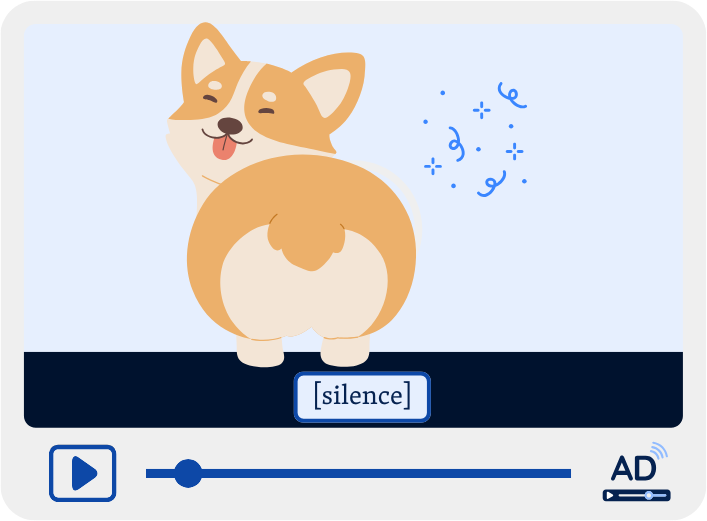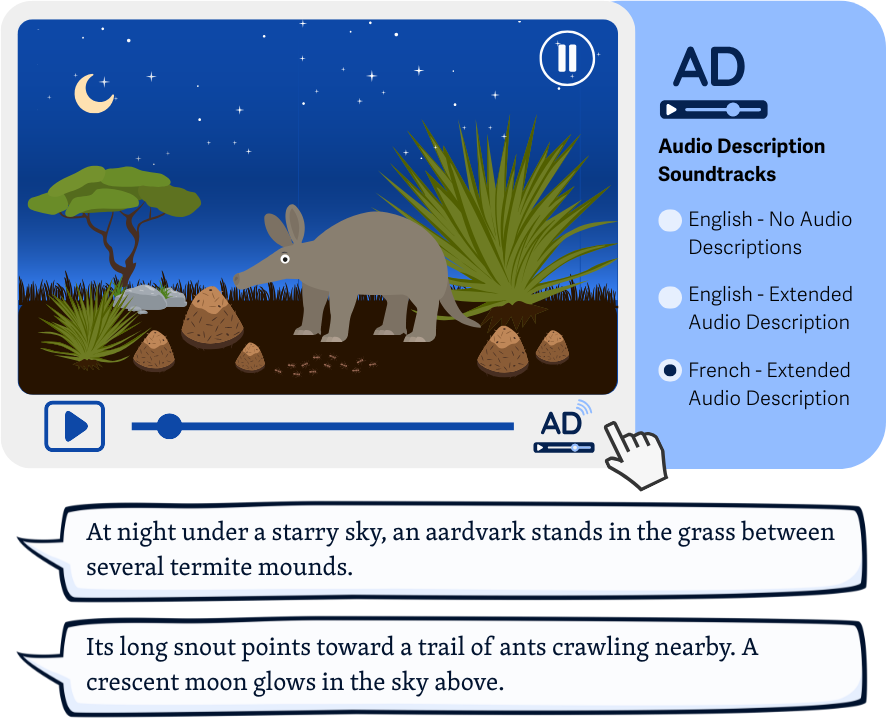What is it?
When a video includes important visual information—like gestures, facial expressions, charts, or scene changes—make sure that information is accessible to people who can't see it. That's where extended audio descriptions come in.
Extended audio descriptions go beyond regular audio descriptions, which are typically added only during natural quiet moments in the video. If there's too much going on visually to describe in real time, extended descriptions pause the video and insert clear, spoken narration that fills in the visual gaps. This ensures that everyone can follow along, even during fast-paced or visually complex scenes.

Why does it matter?
Standard audio descriptions work well when there's room to add them, like during quiet pauses. But when there's constant dialogue or fast action, there's no time to fit in those descriptions.
That's where extended audio descriptions can make a big difference. By pausing the video to describe important visuals like facial expressions, physical actions, or scene changes, they make it possible for people who can't see the screen to truly understand what's happening, instead of trying to guess from the audio alone.
Who is affected?
People who are blind or have low vision. People with cognitive disabilities.
People who are blind or have low vision rely on audio descriptions to follow what's happening on the screen. When visuals move too quickly or there's too much going on, extended descriptions provide the extra detail needed to keep up with the story.
People with cognitive disabilities may also benefit from the added context. A narrator describing the visual elements can help clarify what's happening and make the video easier to understand.
How to implement 1.2.7
This section offers a simplified explanation and examples to help you get started. For complete guidance, always refer to the official WCAG documentation.
To meet this success criterion, you’ll need to include extended audio descriptions for all pre-recorded videos where the visuals are important to understanding the content.
Unlike 1.2.5 Audio Description (Prerecorded), you can’t meet this success criterion with standard audio description alone. 1.2.7 requires that you pause the video and provide extended narration when necessary. A regular description track or text transcript won't meet the Level AAA requirement here.
Here are two ways to go about it:
Add Extended Audio Descriptions to Your Video
Pause the video at key moments, like after a visual-only sequence or between conversations, and add spoken narration describing what's happening. Think of it like having a helpful commentator watching the video with you and filling in the visuals with just the right amount of detail.
Try to keep the pacing natural and the narration clear, focused, and easy to follow.
Offer a Version With Extended Audio Description
Another option is to provide two versions of the video: one with extended audio description and one without. This lets people choose the version that works best for them.
Even better, if your video player allows it, you can offer extended audio description as a toggle, so viewers can turn it on or off while playing the video. This keeps the experience flexible and inclusive.

Conclusion
Extended audio descriptions help make sure no one misses out, especially when a video is packed with visual storytelling. For people who are blind, have low vision, or need extra content, they’re not just helpful; they’re essential.
By pausing the action and describing the visuals, you create a richer, more inclusive experience where everyone can engage with the full message of your video.

